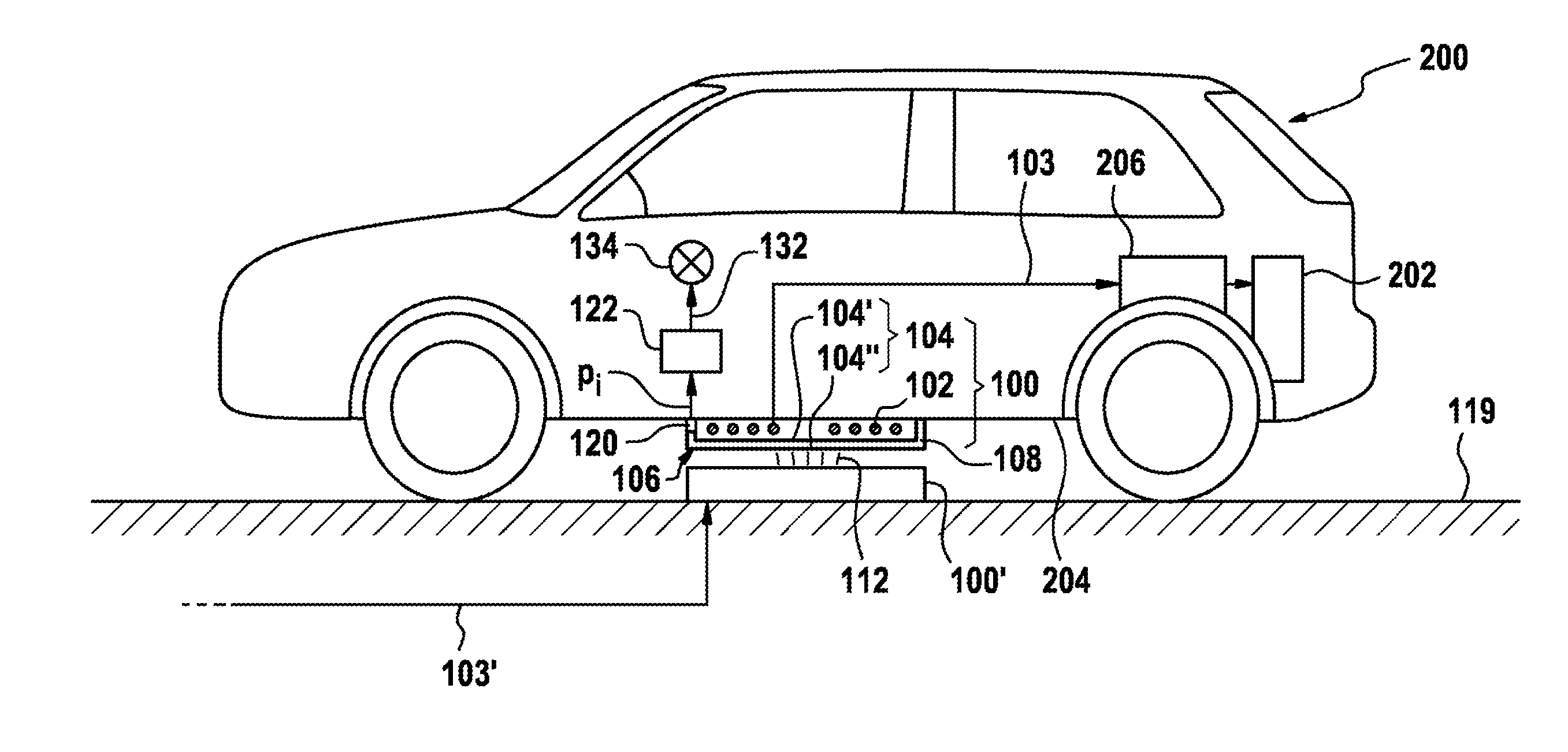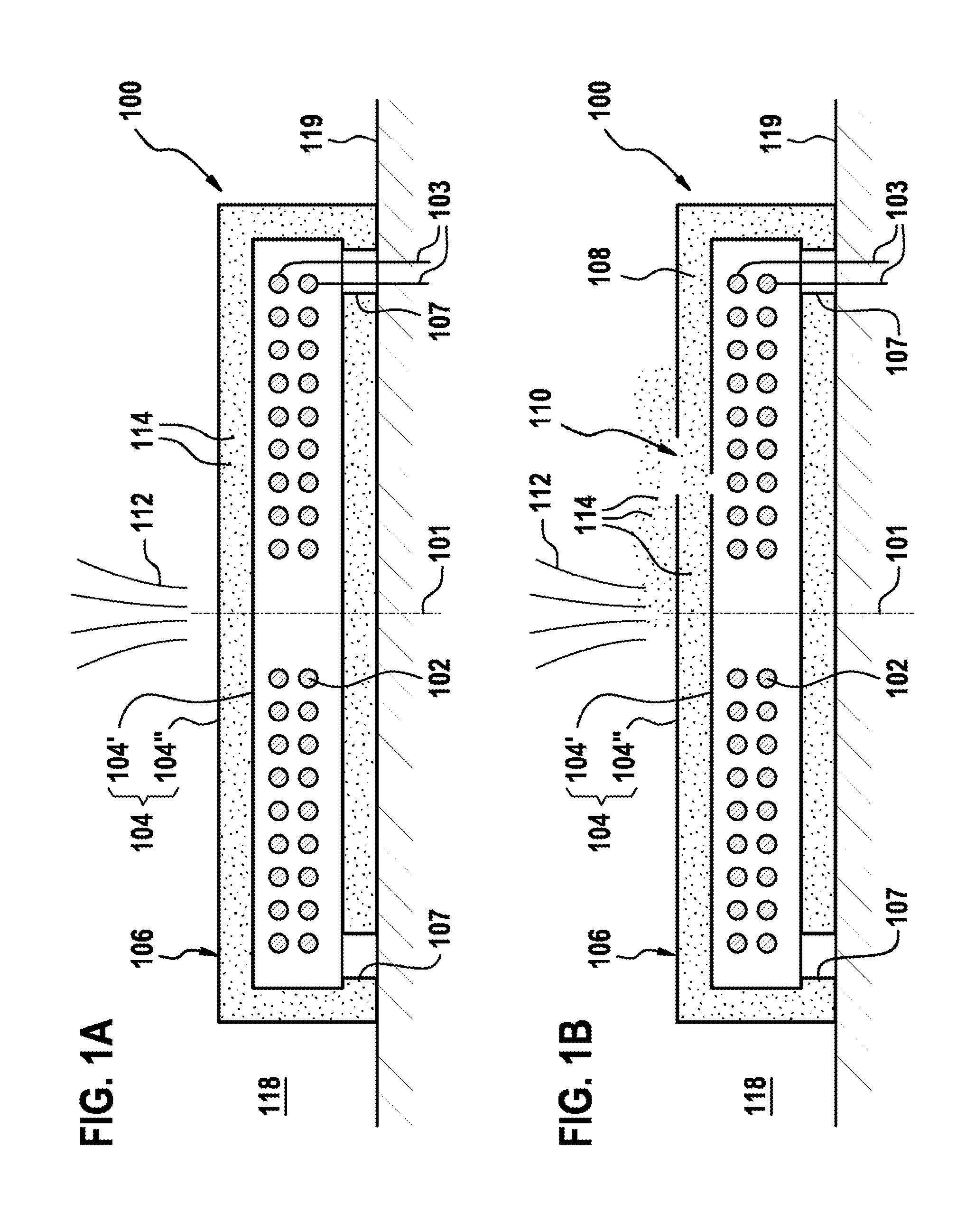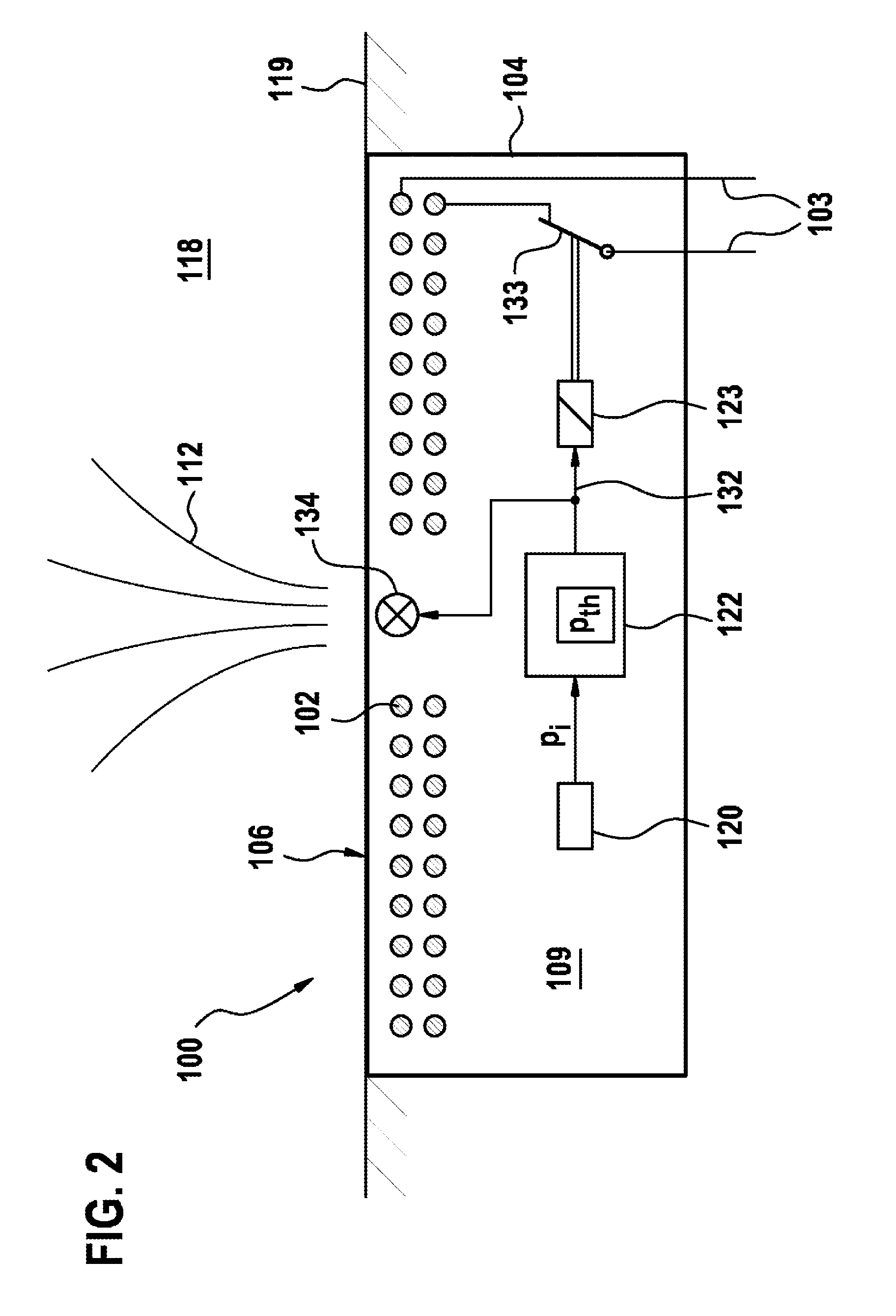Coil apparatus and method for inductive power transmission
- Summary
- Abstract
- Description
- Claims
- Application Information
AI Technical Summary
Benefits of technology
Problems solved by technology
Method used
Image
Examples
Embodiment Construction
[0021]FIG. 1A, in a schematic cross-sectional view, shows a coil apparatus 100, arranged on the ground 119, for inductive power transmission by means of an electromagnetic field 112 to a further coil apparatus (not shown), which can be arranged above the upper side of the coil apparatus 100, designated as the transmission side 106, and for example can be mounted on an electric vehicle (not shown), which is to stop above the coil apparatus 100. The coil apparatus 100 comprises a coil 102, of which the windings are wound on the whole in the form of a flat cylinder, of which the axis of symmetry 101 lies in the drawing plane, and also a housing, which surrounds the coil 102 and likewise has a cylindrical wall 104.
[0022]The wall 104 of the housing of the coil apparatus 100 is double-walled peripherally with an inner wall 104′ and an outer wall 104″ made of an electrically non-conductive material, wherein, in order to support the inner wall 104′ on the underside of the coil apparatus fac...
PUM
 Login to View More
Login to View More Abstract
Description
Claims
Application Information
 Login to View More
Login to View More - R&D
- Intellectual Property
- Life Sciences
- Materials
- Tech Scout
- Unparalleled Data Quality
- Higher Quality Content
- 60% Fewer Hallucinations
Browse by: Latest US Patents, China's latest patents, Technical Efficacy Thesaurus, Application Domain, Technology Topic, Popular Technical Reports.
© 2025 PatSnap. All rights reserved.Legal|Privacy policy|Modern Slavery Act Transparency Statement|Sitemap|About US| Contact US: help@patsnap.com



